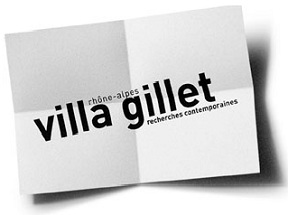We’re All Translators Now
![[title-image]1332154748216[/title-image] allen_1384510163190-jpg](https://cle.ens-lyon.fr/anglais/images/allen_1384510163190-jpg)
Esther Allen is an esteemed promoter of translation, both through her award-winning translations and through translation classes and workshops at PEN and other universities. Her recent translations include Antonio Muñoz Molina’s In Her Absence, named one of the best books of 2007 by the Washington Post; and Rex, by José Manuel Prieto. In 2006, the French government named her a Chevalier de l’ordre des arts et des letters in recognition of her work to promote a culture of translation in the United States.
As our language ceases to dominate cyberspace (our share of the Web has fallen to about 27%), we English speakers are hesitantly stepping out of our monolingual sphere and evincing renewed interest in foreign tongues. Language learning websites like Livemocha and Matador Network seem to crop up like mushrooms, Rosetta Stone is a publicly traded company whose stock is up 41% year to date, and last year’s top-rated YouTube video — remember? —was in Korean (with a few repetitions of “hey sexy lady” thrown in for nostalgia’s sake).
Part of the allure of learning a new language is discovering words for things you wouldn’t have known existed or thought of in the same way before. When I lived in Paris, I learned that a vinaigrette is something very different from the “salad dressing” I grew up with (and not something you’d ever buy in a bottle at the supermarket, despite the now-ubiquitous availability of a product masquerading under that name on our supermarket shelves). The perpetual fascination of attempting to translate between two languages lies in the gap that always exists, even between very closely related words. The Spanish olvido describes something we don’t quite have a word for: not an act of forgetting or moment of forgetfulness or total oblivion, but a mental compartment that sits opposite memory, just as blindness is the opposite of sight. You can’t hold or put something in your forgetting in English, but in Spanish you can tener or poner algo en olvido.
Words that don’t seem to have an exact equivalent are often described as untranslatable. But are there really words that simply can’t be understood outside of the language that produced them? An article by Jason Wire on Matador Network offers the word mamihlapinatapei, from the Yagan language spoken in Tierra del Fuego, as an untranslatable term… and then proceeds to translate it in a way we can all understand: “the wordless, yet meaningful look shared by two people who both desire to initiate something but are both reluctant to start.” If ten people who read this article begin using it regularly in conversation —“Is this mamihlapinatapei we’re feeling right now?” — within five years it could be as common as schadenfreude. And what a shame it will be if that doesn’t happen.
In the language spoken by the Wampanoag people who live in the southeastern part of an area now best known by the name of another Native American tribe that spoke much the same language, the Massachussetts, nouns come in two varieties: animate and inanimate. Cone, the Wampanoag noun for “sun” is inanimate, while ahkee, the word for “earth” is animate. That grammatical distinction demonstrates that the Wampanoag knew, many centuries before contact with Europe, that the earth moves around the sun. The Wampanoag cone clearly cannot be translated simply as “sun” —but I have nevertheless just translated it for you.
Translation is an art, not a science, and like all artists (and perhaps all scientists, as well) its practitioners are more likely to be hacks than geniuses. But there aren’t many words, or poems, or books that genuinely cannot be conveyed in another language, and might not even be enriched in the process. The great Japanese translator Motoyuki Shibata claims that Arthur Golden’s Memoirs of a Geisha (an English fiction that purports to be a translation from Japanese) is much improved by its translation into Japanese by Takayoshi Ogawa, who transformed it into something authentic by incorporating the actual traditional vocabulary used by geishas. (Even so, the novel never achieved bestselling status in Japan, where people just weren’t that interested in reading another geisha story.)
What really can’t be translated is the experience of sharing a language – not just a word or two here and there —within the culture of people who speak it. That’s why the Wampanoag are currently engaged in a heroic act of linguistic revitalization, translating their entire language from the written documents left by colonization to bring it back into spoken use in their daily lives. There’s no way anyone else can do that for them, just as no one but you can translate yourself — via study and practice — into the shared space of a new language.
But even when you share a language with someone, there’s much that remains untranslatable. What does each of us mean by “love”? Often something quite different, as we learn over time. And why do the romantic leads of all Bollywood films invariably take a break from speaking Hindi at the climactic moment of their story to say the crucial words “I love you” to each other in English? Translate that for me, if you can.
Cette ressource a été publiée dans le cadre de la cinquième saison du festival "Walls and Bridges", organisé par la Villa Gillet, qui s'est déroulé à New York du 9 au 18 octobre 2013.
Pour citer cette ressource :
Esther Allen, We’re All Translators Now, La Clé des Langues [en ligne], Lyon, ENS de LYON/DGESCO (ISSN 2107-7029), novembre 2013. Consulté le 10/12/2025. URL: https://cle.ens-lyon.fr/anglais/litterature/entretiens-et-textes-inedits/we-re-all-translators-now



 Activer le mode zen
Activer le mode zen


